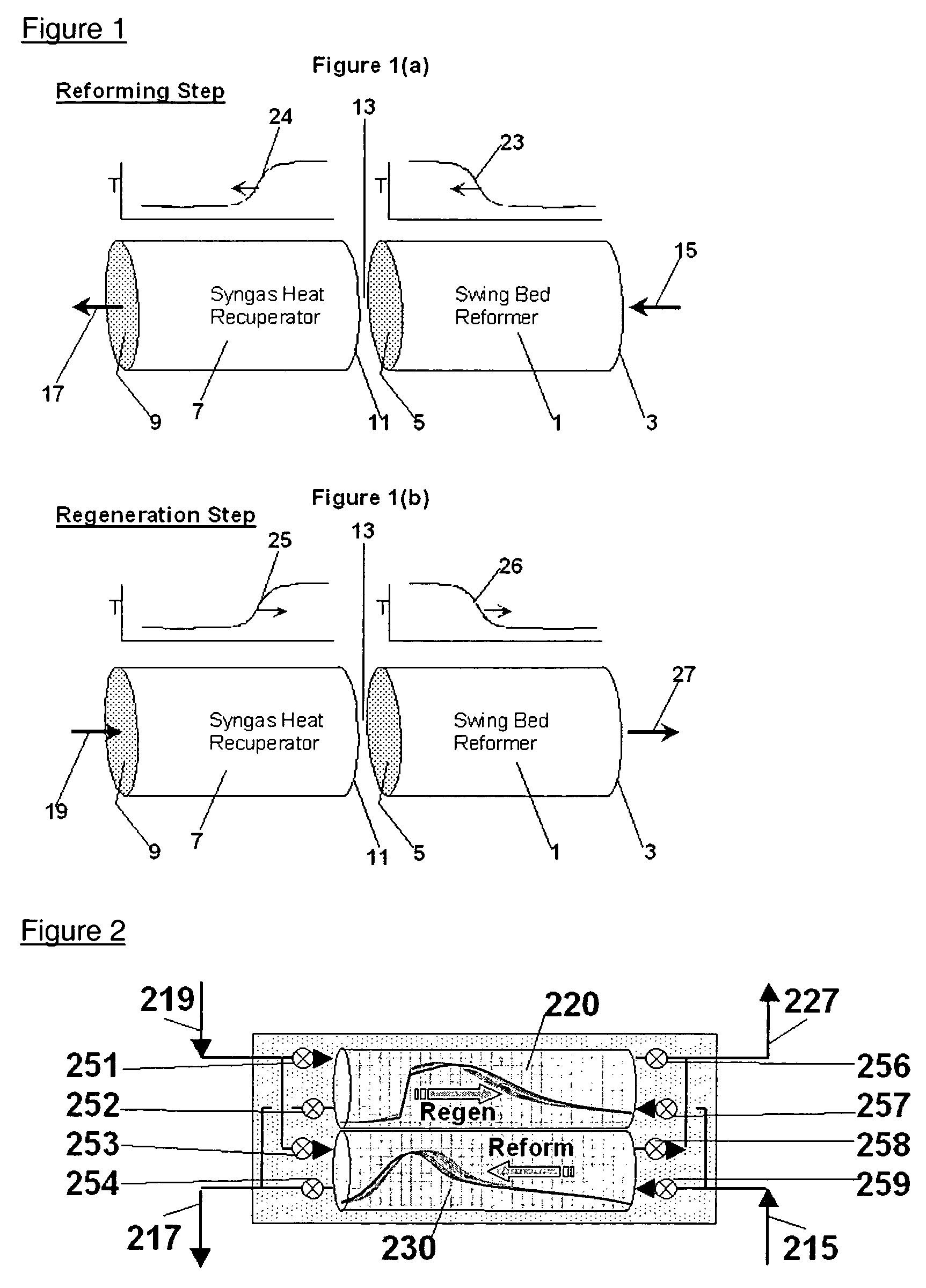Solid oxide fuel cell systems having temperature swing reforming
a technology of solid oxide fuel cell and temperature swing, which is applied in the direction of combustible gas production, sustainable manufacturing/processing, lighting and heating apparatus, etc., can solve the problems of limiting the utility of steam reform furnace in point-of-use fuel applications, occupying a large space, and substantially greater than the volume of tubes
- Summary
- Abstract
- Description
- Claims
- Application Information
AI Technical Summary
Benefits of technology
Problems solved by technology
Method used
Image
Examples
example 1
[0064]The following example is included to better illustrate aspects of the present invention. An amount of methane was used as a feed to the integrated TSR / SOFC system illustrated in FIG. 3. The results shown are for methane feed at about 8000C1 GHSV and a 3-second TSR cycle time. The steam / carbon ratio into the reforming side is about 1.5. Hydrogen utilization in the fuel cell stack is about 0.8, CO utilization is about 0.39. In typical operations, the hydrogen utilization and relative reaction rate / utilization of H2 and CO will vary with fuel cell type membrane chemistry, temperature and other cell parameters. The split of stream (303) is about 53% into (305) and about 47% into (104). Key operating and process parameters are identified in the following Table 1.
[0065]
TABLE 1301303304307308StreamRef-302SOFC-FC-H2-305Rgn-CathodeRegengmolsFdRef-outoutrxRfm-RcyFuelEffluentEffluentTemp C.500542527504P0.50.30.20.20.20.20.1AtmGaCH44.070.120.1200.050.070H2002.7313.0506.196.868.46H2012.92....
PUM
| Property | Measurement | Unit |
|---|---|---|
| inlet temperature | aaaaa | aaaaa |
| inlet temperature | aaaaa | aaaaa |
| temperature | aaaaa | aaaaa |
Abstract
Description
Claims
Application Information
 Login to View More
Login to View More - R&D
- Intellectual Property
- Life Sciences
- Materials
- Tech Scout
- Unparalleled Data Quality
- Higher Quality Content
- 60% Fewer Hallucinations
Browse by: Latest US Patents, China's latest patents, Technical Efficacy Thesaurus, Application Domain, Technology Topic, Popular Technical Reports.
© 2025 PatSnap. All rights reserved.Legal|Privacy policy|Modern Slavery Act Transparency Statement|Sitemap|About US| Contact US: help@patsnap.com



